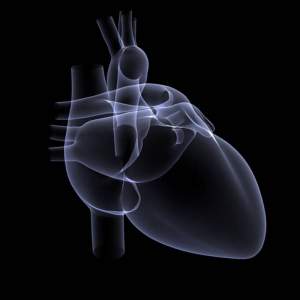
Sapien Artificial Heart Valve Use Expanded
On October 19, 2012, the Food and Drug Administration approved the expanded use of the Sapien Transcatheter Heart Valve (THV). Patients with aortic valve stenosis who can receive surgery but appear at risk of serious complications during surgery are now approved for the heart valve.
The Sapien THV was first approved in 2011 for patients who could not undergo surgery for aortic valve stenosis. The condition occurs when calcium deposits occur on the aortic valve and cause it to narrow. The heart will eventually work harder to push blood through the reduced opening, and aortic valve stenosis can eventually lead to fainting, chest pain, heart failure, arrhythmias, or even cardiac arrest.
The Sapien THV does not require a surgeon to open the chest or heart. Instead, the THV is compressed into a small tube referred to as a delivery catheter. The delivery catheter and the THV are then placed in the femoral artery in the leg and threaded to the bad valve. Lastly, the THV is released from the delivery catheter and then increased to normal size with a balloon. The inserted THV begins working right away.
The use of the Sapien THV was expanded after a clinical study compared results between 348 patients who received the THV through the delivery catheter and 351 patients who received a valve replacement during open-heart surgery. The groups experienced similar death rates during the first month, first year, and first two years. THV recipients are at an increased risk of artery dissection or perforation, and the same patients are at risk of stroke during the first month after the procedure.
Christy Foreman, the director at the FDA’s Center for Devices and Radiological Health, stated, “Any procedure to replace the aortic valve carries the risk for serious complications, but for some patients with coexisting conditions or diseases that risk may be especially high. The THV serves as an alternative for some very high-risk patients.”
Source: U.S. Food and Drug Administration
Comments
Must Read
 Beware of Medical Negligence
Beware of Medical NegligenceWhat is Medical Negligence?• Medical negligence is an alternative phrase or term for medical malpractice.
 Starting a Medical Malpractice Case
Starting a Medical Malpractice CaseWhat is a Medical Malpractice Case? • Medical malpractice occurs when a doctor or another medical professional (such as a nurse or technician) partakes in a negligent action or delivers a fraudulent action that causes an injury to a patient.
 Read This for Ultimate Misdiagnosis Information
Read This for Ultimate Misdiagnosis InformationWhat is a Misdiagnosis? • A misdiagnosis is an inaccurate diagnosis of a medical ailment.
 How to Handle a Medical Negligence Claim
How to Handle a Medical Negligence ClaimWhat is a Medical Negligence Claim?• A medical negligence claim is a direct legal action taken by a patient who falls victim to the negligent or wrongful actions of a medical provider or medical professional.
 3 Major Topics of Medical Malpractice Insurance
3 Major Topics of Medical Malpractice InsuranceWhat is Medical Malpractice Insurance?• Medical malpractice insurance is a financial-based instrument available only to physicians or those individuals involved in healthcare.
